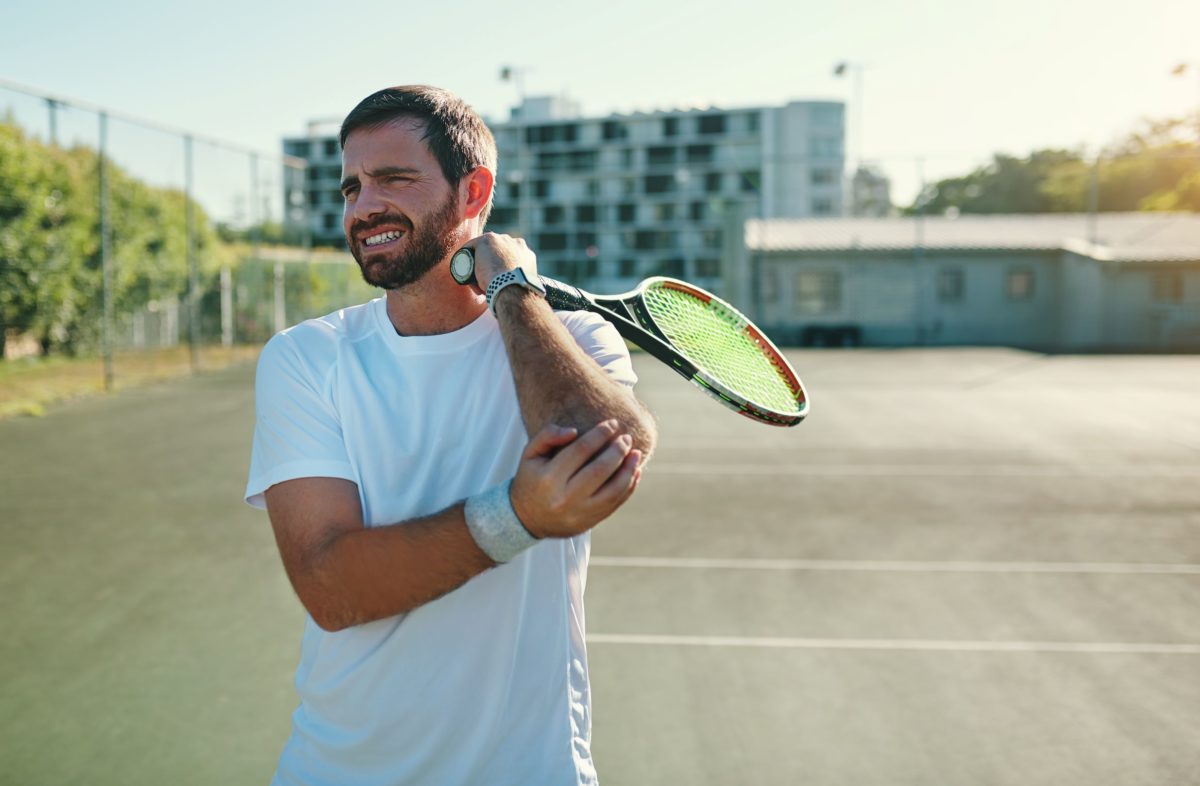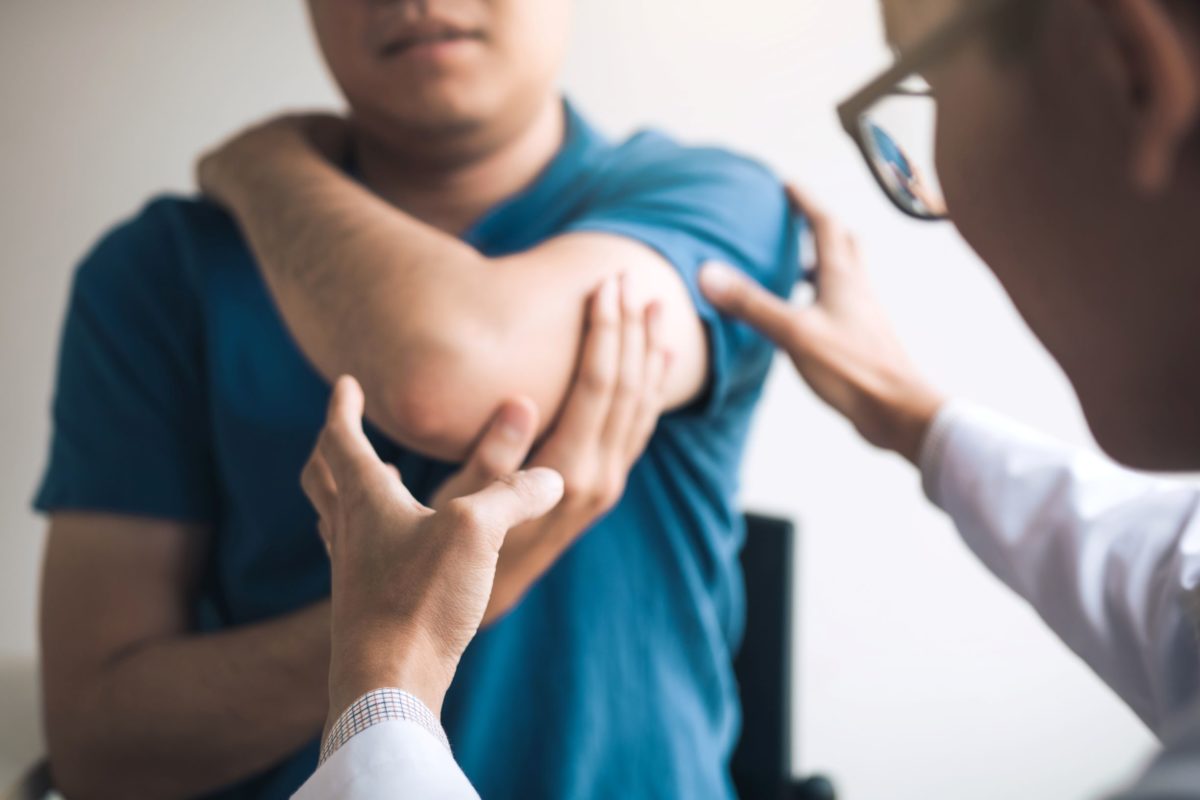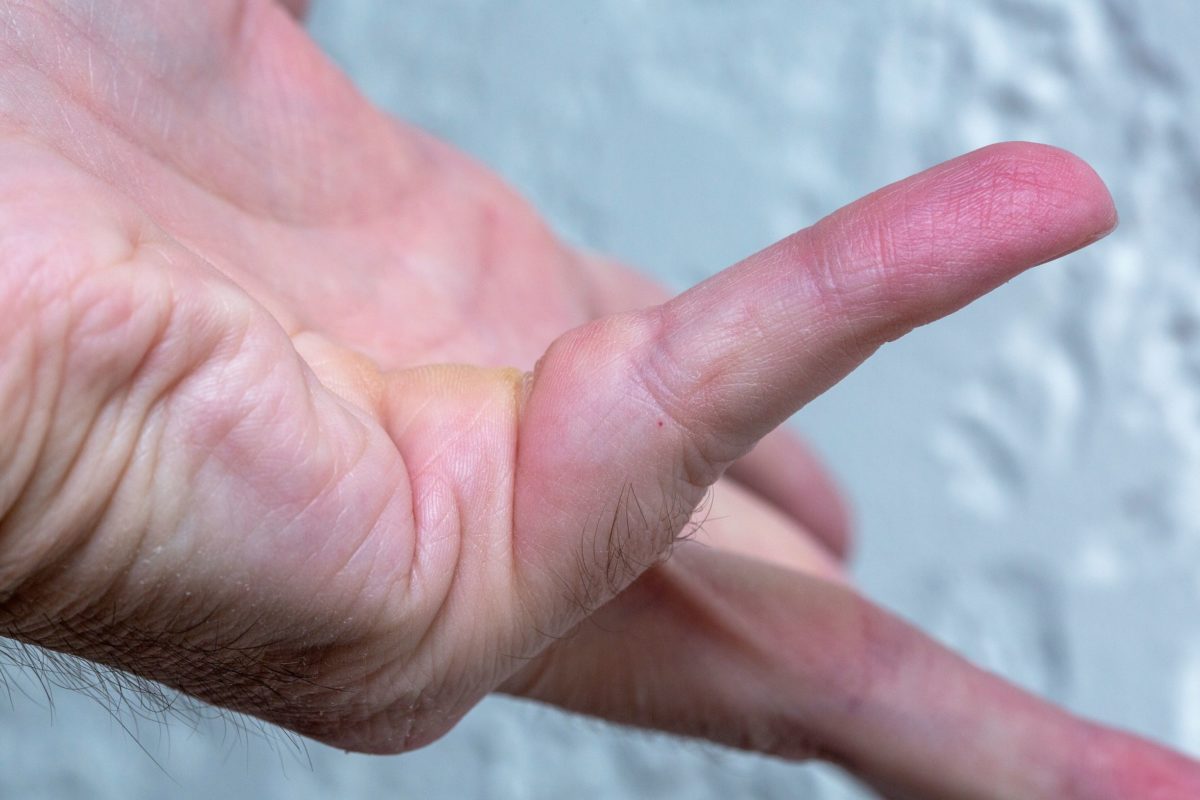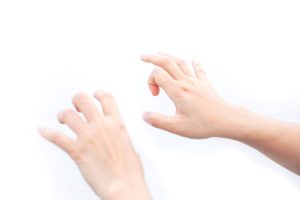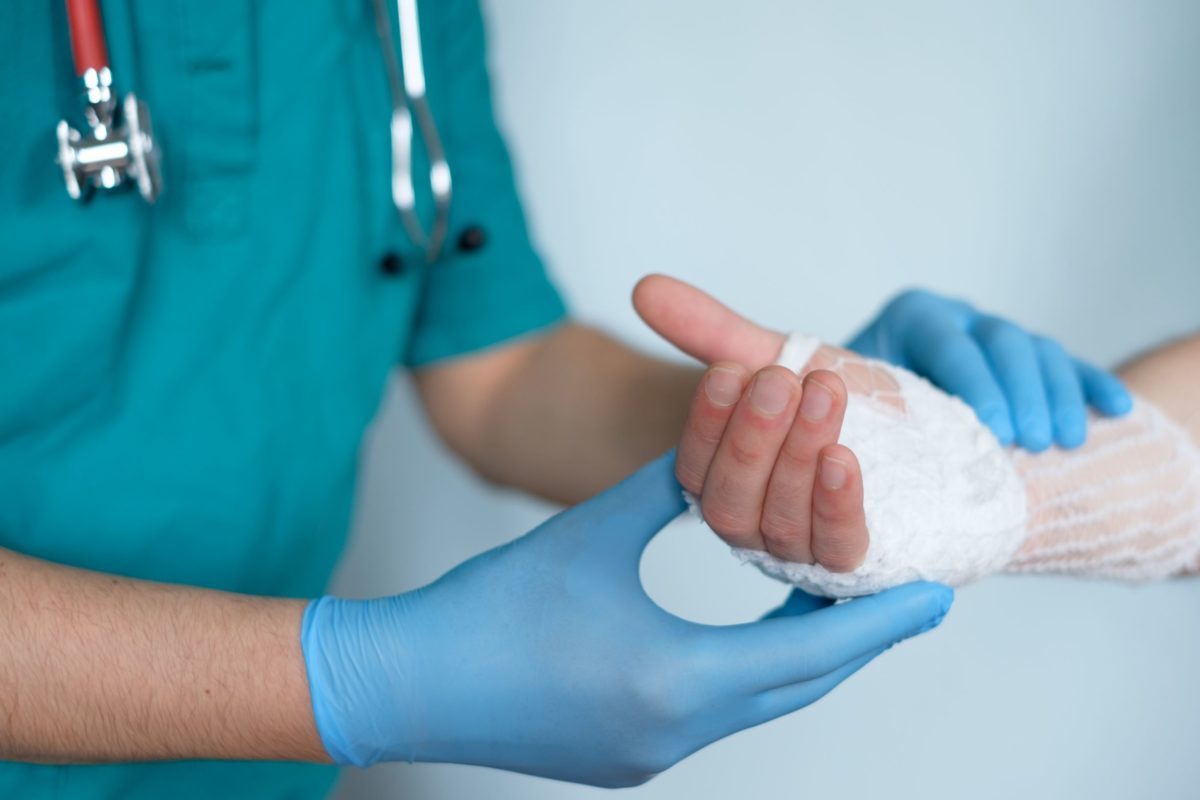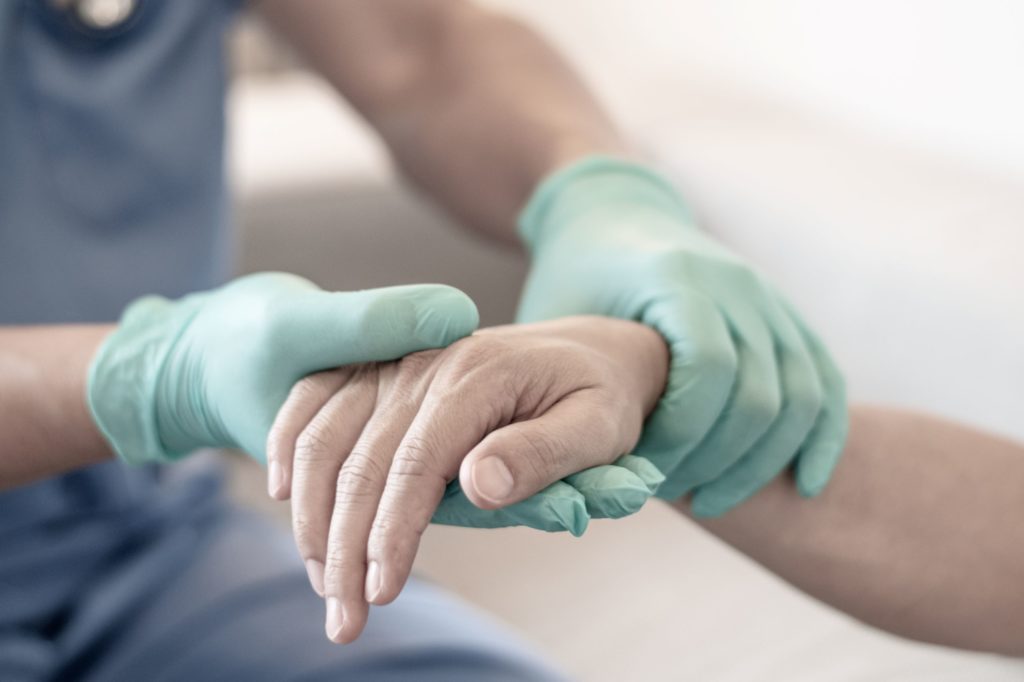Elbow pain due to overexertion may feel like it’s coming from all over, and patients really just want the pain gone. The first step in treating elbow pain, however, is to pinpoint the exact location of the problem, which is the primary difference between tennis elbow and golfer’s elbow.
These two common conditions bring many patients into our elbow doctor’s offices in West Bloomfield, Howell, Warren, and Macomb Township every year.
The good news is that both of these conditions are highly treatable with self-care, rest, or the use of an elbow brace. When these remedies are not effective, elbow surgery is an option as well.
What is Tennis Elbow?
Technically called lateral epicondylitis, tennis elbow occurs when the tendons that anchor the muscle to the bone on the outside (lateral) part of the elbow are overused. When these tendons degenerate or become inflamed, it weakens and causes stress on the entire site.
In other words, tennis elbow is caused by a swelling of the tendons that bend your wrist backward away from your palm. People who repeatedly use their elbow and arm muscles may be susceptible to tennis elbow, such as painters, plumbers, and butchers, as well as athletes.
Symptoms of tennis elbow include pain or burning on the outer part of the elbow, as well as a weaker grip. They typically are worsened with forearm activity, such as holding a tennis racquet or turning a wrench. The pain is typically mild at first, but worsens over time if the action that is causing it is not minimized. Tennis elbow is usually not associated with a traumatic injury.
The dominant arm is affected more often than the non-dominant arm.
Tennis elbow can usually be treated with rest, pain medication, Botox injections, or the use of a brace. Tennis elbow surgery may be recommended in more extreme cases.
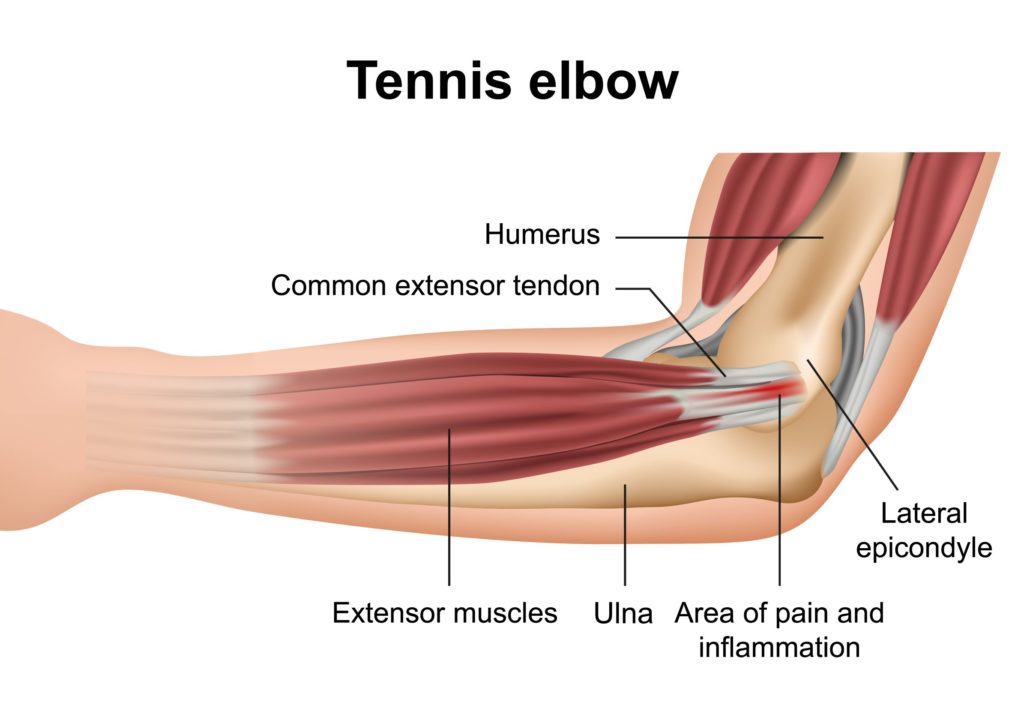
What is Golfer’s Elbow?
Golfer’s elbow is more formally called medial epicondylitis. It is sometimes referred to as baseball elbow or suitcase elbow.
The source of the pain is on the inner side of the elbow. It occurs when the tendon that connects the forearm muscles to the bone is overused.
Golfer’s elbow is about twice as common in men than in women. Despite its name, it is caused by general overuse and can affect virtually anyone.
Golfer’s elbow also can be treated with rest, pain medication, injections, and the use of a brace.
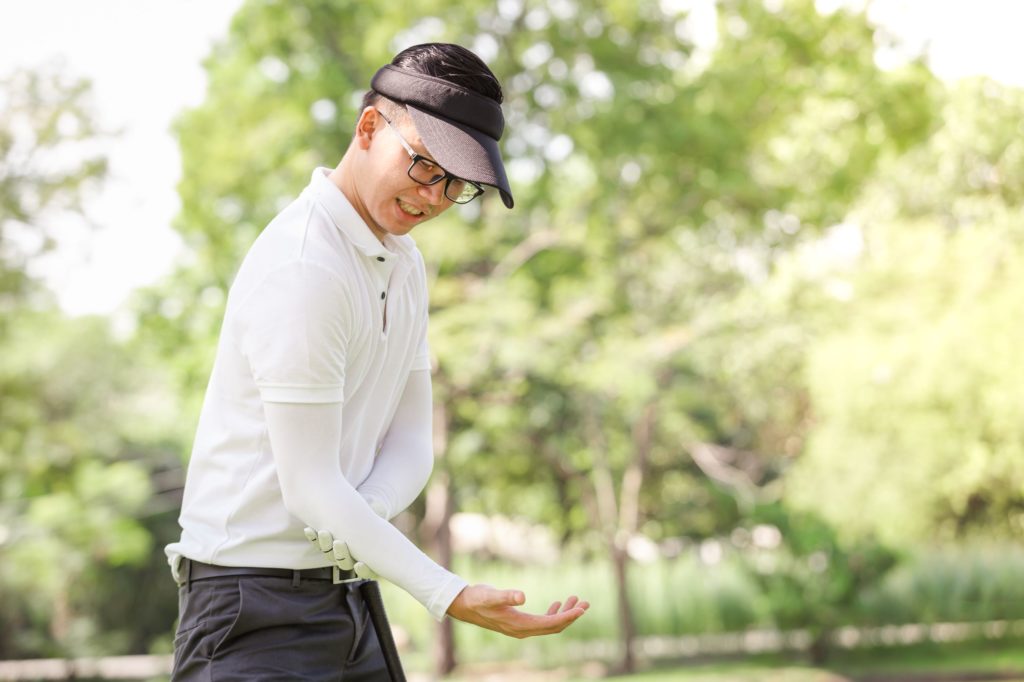
What is the Difference Between Tennis Elbow and Golfer’s Elbow?
While causes and treatments are similar, there are some differences between tennis elbow and golfer’s elbow.
The primary difference is the source of the inflammation. With tennis elbow, the outside of the elbow and forearm areas are inflamed, but with golfer’s elbow, inflammation is on the inner side of the arm and elbow.
Likewise, tennis elbow stems from damage to an outside tendon, and golfer’s elbow is associated with damage to an inner tendon.
Both are forms of elbow tendinitis.
Diagnosis and Treatment of Elbow Pain
For most people, the pain subsides by reducing or eliminating the action that is causing it. Physical therapy to strengthen the muscles in the arms may help as well. When self-care, rest, and the use of pain medications or a brace do not help, surgery may be necessary.
Elbow surgery options include:
- Open surgery, which requires making an incision at the elbow and is performed on an outpatient basis.
- Arthroscopic surgery, an outpatient procedure that uses smaller instruments and smaller incisions.
A common surgery to treat golfer’s elbow is called medial epicondyle release. It requires an incision along the arm over the medial epicondyle, and the surgeon’s goal will be to take tension off the flexor tendon.
Similarly, a lateral epicondylitis surgery can be used to treat tennis elbow. The goal of this surgery will be to release a portion of the tendon from the bone, remove the inflamed tendon, or repair tendon tears.
For proper treatment, it’s important to differentiate between tennis elbow and golfer’s elbow. For a diagnosis and treatment plan, make an appointment to see Dr. Arora at one of his southeast Michigan locations.

